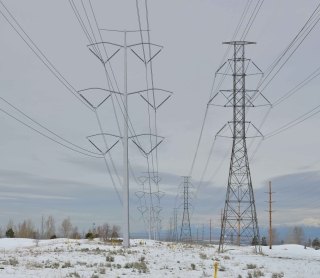Understanding public concerns and helping stakeholders visualize a project are key steps to advancing transmission development. At SWCA, we combine visual resources with proactive public outreach to help build consensus for projects.
Demand for electricity has been steadily increasing for decades, creating a need for new generation facilities and transmission lines. The expected rate of increase in electricity demand is three times what existing and planned transmission lines can carry, creating a gap between the market for generation and the transmission system.
As developers strive to meet the need for new power transmission, more opportunities for high-voltage electric transmission (HVET) line projects located within public rights-of-way will emerge. Yet, these large-scale linear projects are subject to increasing public scrutiny. HVET lines that blade through untouched open space and traverse hundreds of miles of countryside can quickly become controversial when they affect communities that may not see the direct benefits of those projects. For regional transmission lines in particular, proposed projects can cross state lines, pass through numerous counties and communities, and bisect a wide variety of landscape types.
With proposals for new HVET projects becoming more common, public opposition is on the rise due to a perceived loss of community development control, negative media portrayal, and the visual impacts of large-scale, imposing utility structures. Websites and social media can readily be used by opponents to provide a forum for misinformation, reinforced falsehoods, and public criticism that can quickly derail a project. Examples of projects losing momentum and falling victim to vicious grassroots opposition are easy to find in this era of instantaneous information availability.
HVET lines that blade through untouched open space and traverse hundreds of miles of countryside can quickly become controversial when they affect communities that may not see the direct benefits of those projects.
Getting to the Root of Public Skepticism
Understanding the issues, hot buttons, root of public skepticism, and precedent set by previous projects both regionally and locally for communities affected by project development is critical. Public opposition can come from a variety of concerns including unwanted development, changes to aesthetics that can impact property values and desirability of real estate, perceived or real impacts to longstanding viewsheds, and negative impacts to wildlife habitat for protected species.
Developers must take a strategic approach that is inclusive of the community and tailored to regional concerns to engage the public, cultivate community acceptance, and build a communication network. The strategic approach must also identify the education tools needed for optimal dissemination of information. In particular for utility-scale projects that can seem complicated and visually daunting, effective strategic outreach requires the use of informative messaging in tandem with visualization tools that help show how community concerns will be addressed.
Let’s Get Visual
SWCA consultants use a wide variety of visualization tools. Selection of the correct tool for creating a visual message — be it photographic simulation, 3-D animation, geovisualization, virtual reality, or an animated flyover — depends on the type of audience. The accuracy and understandability of the illustration is far more important than the elaborateness of the visualization type. Even a low-tech visualization tool, implemented in tandem with good messaging, can be effective in helping interested stakeholders to understand the right-of-way impacts occurring in their community.
Why SWCA Uses Proactive Outreach
For developers, understanding community concerns and regional attitudes toward utility-scale development is critical at the onset of a project. Major linear projects are subject to regulatory requirements such as NEPA studies, state environmental documentation, and permitting. But waiting for public involvement milestones in the regulatory process to communicate with affected communities can mean that the public already has a perception — or misperception — of what the project entails. Before the formal project gets under way, early interaction with landowners, community groups, and stakeholders helps to identify the issues and potential snares and build the communication network.
Proactive outreach can also prevent schedule delays caused by public opposition from lack of information. In addition, such early interaction can inform the communication materials that then pave the way for valuable information exchange during key public involvement milestones when public input is solicited.
If, for example, we learn through early communication that preserving pastoral landscapes is important to a community, we can use photo simulations to illustrate the before-and-after effects of the project. We can also show simulations of alternative types of structures, lines, and coloring that may be important for shielding visual intrusion and blending into the background.
Proactive outreach can prevent schedule delays caused by public opposition from lack of information.
For issues like visual fragmentation, an animated flyover can be utilized to give viewers a bird’s-eye view of the proposed line while allowing them to pinpoint areas of concern within the landscape. By toggling through the environment on-screen, planners are better able to show and explain the impacts of a project in a way that is meaningful to stakeholders with a variety of concerns. There are times when a photo-realistic simulation of a proposed facility may be inappropriate, and a charrette-type sketch would be more valuable.
And of course, when planning a large-scale project, timing the release of information is critical. Project planners must reach affected populations at the right time in order to give citizens factual project information that will, in return, help the project team solicit input from the public.
Large-scale transmission line projects are inevitable given increases in consumer energy demand. Laying the groundwork for a large-scale energy project by examining the communities impacted and planning for preliminary outreach is critical.
Effective strategic outreach involves a combination of tactics: understandable and informative messaging combined with accurate illustrations of the proposed project. The objective is to provide decision-makers and invested stakeholders with the kind of information they need to give valuable input on the project, as well as build consensus. The result is a smooth project process from conception to construction.
